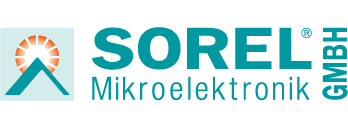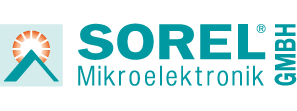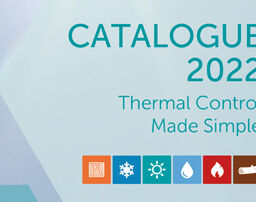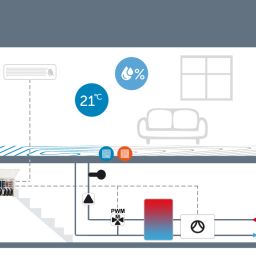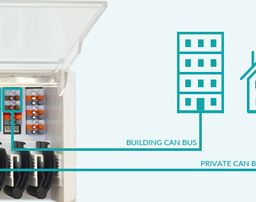Optimising Heat Interface Units with Electronic Controls
Reading time: 6 Min

A little warm-up story
It has become autumn in Kassel. On the way to a customer whose old gas boiler is on strike, heating engineer Jörg Vogt shouts excitedly into the hands-free unit of his van: “What, the shower water is too cold again? I only adjusted your balancing valves on Tuesday!”
On the other end of the line, Mr. Schwarz talks loudly to Jörg Vogt. Mr. Schwarz recently moved into his attic apartment on Ringstrasse. New building, 6 floors. Vogt curses mentally.
This decentralized fresh water station in the Ringstraße is enough to drive you crazy. What kind of mess has the manufacturer delivered there again? Or did the planner screw up? Anyway, this plant seems to him to be very difficult to control.
“Yes, Mr. Schwarz, I can try again next week to see if I can adjust the central pump. But I can’t promise anything… Yes, I’m afraid I can’t make any earlier… Okay, okay, I’ll come over to you in a minute… Yes, sorry Mr. Schwarz, see you there.”
Unfortunately, problem systems like these are often found in the field – even with high-quality heat interface units (HIU) and solidly planned hydraulics. Especially the decentralised fresh water systems, which are often still purely thermomechanically controlled, require extremely careful planning and installation with the highest precision in hydraulic balancing, which is rarely achieved in practice even by good specialists.
In contrast, even small deviations in the installation or selection of system components can affect the heat supply in individual apartments, certain tapping situations or entire buildings. The consequences of such deviations range from undersupply to energy wastage. It is rumoured in industry circles that not even half of such decentralised freshwater systems really function smoothly across manufacturers.
Six advantages of electronic controls for heat interface units
An electronic control system, on the other hand, can take a holistic view of the entire system by aggregating sensor information and having the necessary control options at hand to intervene quickly and effectively. In this way, the supply reliability of the system can be increased at every tap, comfort can be enhanced and energy efficiency can be optimised. An electronic system can enhance heat interface units in at least 6 ways:
1. Compensation of small errors in hydraulic balancing or unrealistic concurrency assumptions
The regulatory requirements for the simultaneity factor, in Germany for example by DIN, are often unrealistic for individual projects or pipeline sections. At core times the systems reach their limits, so that at some taps there is not enough temperature. Electronic, networked fresh water stations, on the other hand, have system-wide intervention options in order to always provide the correct tapping temperature for each situation.
2. Communication with the central pump
Central pump and decentralised fresh water stations are often isolated from each other in terms of control technology, so that the volume flow cannot be optimally adjusted to the current demand. The consequence can be excessive energy consumption or undersupply. This can be remedied by a system solution that works directly with the central pump control system in addition to the fresh water preparation in the apartments.
3. Precise hot water temperature
The temperature control of the fresh water part of a heat interface unit is often too imprecise and slow. Deviations of +-5°C are not uncommon here, although even significantly smaller deviations noticeably impair showering comfort. In contrast, an electronic control system with fast-reacting stepper valves adapts to the respective conditions in seconds.
4. Stable room temperature
The combination of multi-zone control and weather-compensated heating circuit control per station continuously adapts the flow temperature of the surface heating to the respective outside and room temperatures. Example: When the outdoor or room temperatures fall, the flow temperature is first raised and then slowly lowered again as soon as the actual temperature in the room approaches the setpoint temperature. This enables a stable room temperature without noticeable overshoots.
5. Save a separate heating controller in each unit
As standard, only one centrally adjustable heating characteristic curve is possible or a high flow temperature must always be maintained in the system for hot water preparation. Meanwhile, weather-compensated control of each residential unit is increasingly desired and in some countries mandatory (e.g. EnEV in Germany). This must then be retrofitted separately for each heat interface unit. Integrating a uniform control concept into the heat interface unit would be more effective.
6. Connectivity
In the age of connectivity, electronic heat interface units communicating with the Internet open up various possibilities for remote diagnosis, data analysis or for maintenance purposes.
For example, firmware updates can easily be installed over the air via an integrated WiFi chip, whether for troubleshooting or functional improvements. This means that the entire system can continue to evolve even after installation and remain up-to-date in terms of IT security.
In the context of heating systems, it is particularly important that firmware updates can be carried out without special IT knowledge, but at the same time it is ensured that no system settings can get mixed up – true to the motto “never change a running system”. In the context of building technology, firmware updates should therefore be designed as a useful maintenance function for the specialist and not as a gimmick for the consumer.
Especially in apartment buildings and non-residential buildings, building management systems play an increasingly important role. In practice, the variety of common communication protocols such as CAN, Modbus or BACnet represents a hurdle. It is impossible for heating controllers to integrate all bus systems at the same time, but in any case they should offer at least one interface “to the outside world”. If the BMS protocol used differs from that of the controller, the desired compatibility can usually be achieved by using appropriate converters that are freely available on the market.
Ensure double data security
For reasons of data protection, it is essential to ensure appropriate encryption when transmitting data within a networked system. For example, when connecting to the Internet via WLAN, the WPA2 security standard should be used, which is based on the Advanced Encryption Standard AES.
Furthermore, in apartment buildings, for example, it is advisable to divide the control system into two data networks: a private one for the apartment, which can only be viewed by the respective residents, and a system-wide one for the overall optimization of the heating system in the building. This allows the connected HIU to develop its full potential while at the same time protecting the privacy of the residents.

Figure: The physical division into different data networks securely separates system-relevant and private data in the apartment building
Even complex systems must be operable
Even the best technology is pointless if the installers won’t use it. Therefore, it is also important for heat interface units to ensure time-saving and convenient installation. UX-oriented user guidance can greatly promote the correct setup of the system and thus fuel the market success of the heat interface unit.
With regard to cabling, wiring the zone control of an underfloor heating system in particular is often tiresome. However, this can be accelerated significantly by using plug-in instead of screw terminals, among other things. In addition, pre-cabling ex works can significantly reduce the amount of work and the error potential on the construction site.
With connected systems, uncomplicated network setup is also particularly important. This is all the more important because not all HVAC craftsmen feel at home in the digital world. Ideally, wireless devices such as room thermostats and sensors should find and connect each other at the push of a button, without requiring special network knowledge.



